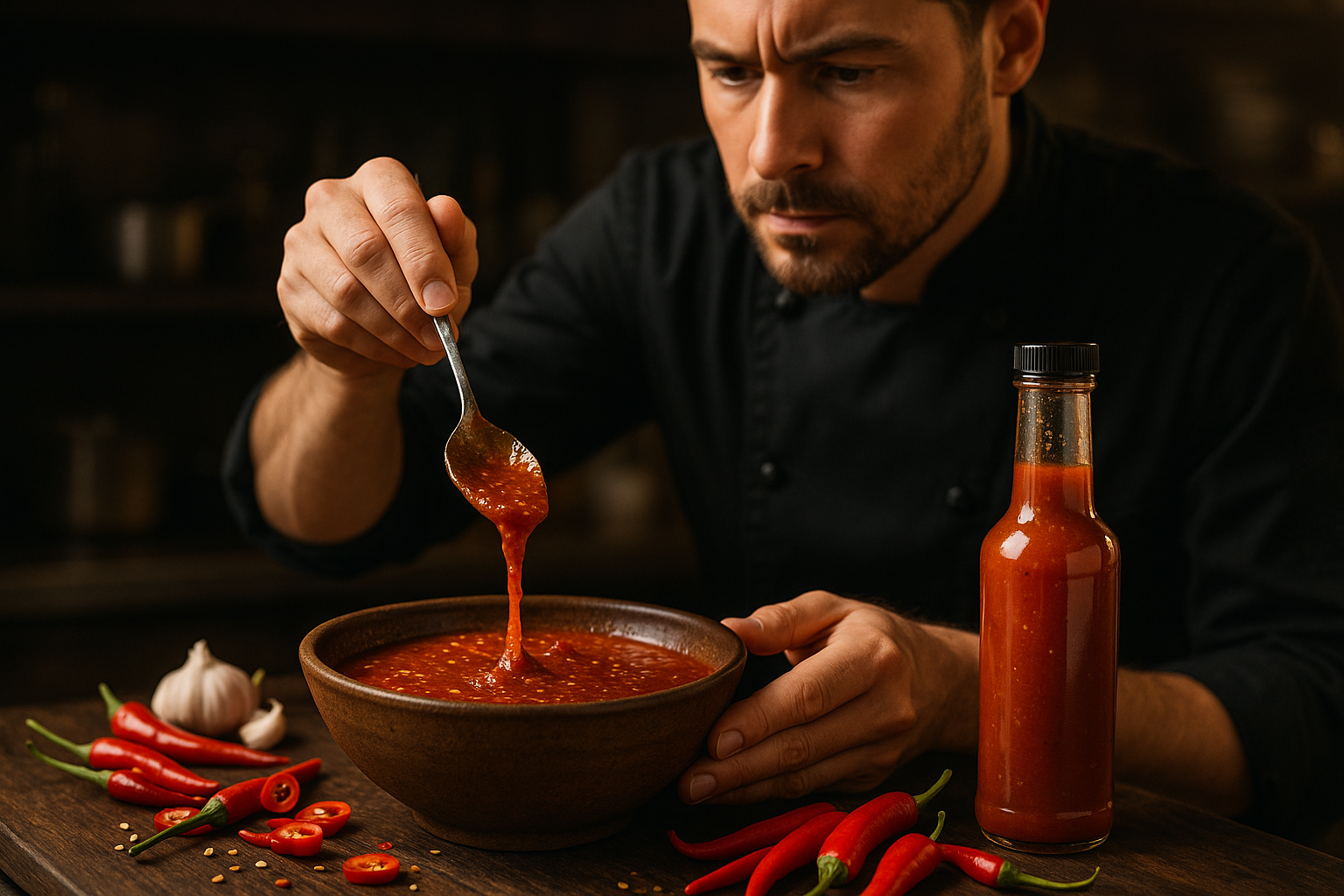Stirring up Excitement: Dive into the World of Artisanal Hot Sauce
Are you ready to turn up the heat and dive into the delectably diverse world of artisanal hot sauces? Strap in, as we embark on a flavor-packed journey, exploring the fiery delights that have spiced up our culinary experiences. Hot sauce, a concoction of chili peppers and other ingredients, has a history as rich and varied as its flavors. Its journey began thousands of years ago when indigenous communities in South and Central America started cultivating chili peppers. Over time, these peppers traveled across the globe, paving the way for an array of hot sauces that we relish today.

The Heat Factor: Understanding Scoville Units
The heat quotient of a hot sauce is measured in Scoville Heat Units (SHU). This scale, named after pharmacist Wilbur Scoville, ranges from zero for bell peppers to a whopping 1.5 million SHUs for the Carolina Reaper, the world’s hottest pepper. The higher the SHU, the hotter the sauce.
Artisanal Vs. Commercial: Spot the Difference
While commercial hot sauces are popular, there’s a surge in the demand for artisanal varieties. Handcrafted with care, these sauces are often free from preservatives and artificial additives. They also offer a wider range of flavors, from sweet and tangy to smoky and fiery, catering to varied palates.
The Global Hot Sauce Scene: A World of Flavors
Hot sauce is not just a condiment; it’s an integral part of many cuisines. From Mexico’s smoky chipotle and fiery habanero to Thailand’s tangy sriracha and sweet chili, the world of hot sauce is as diverse as the cultures they originate from.
Innovation in Hot Sauce: Pushing the Boundaries
Innovation in the hot sauce industry is on the rise, with craft producers experimenting with unique ingredients like bourbon, truffle, coffee, and even fruits like mango and blueberry. These distinctive flavors are exciting hot sauce aficionados and attracting new fans.
Spicy Bytes:
-
The first commercially bottled hot sauce was Tabasco, introduced in 1868.
-
The Scoville scale was developed in 1912.
-
There’s even a hot sauce expo held annually in Brooklyn, New York.
-
Craft hot sauces often use locally sourced ingredients, supporting local farmers.
-
Contrary to popular belief, hot sauce does not cause stomach ulcers.
As we conclude our fiery journey, it’s clear that the world of artisanal hot sauce is an exciting realm of flavors waiting to be explored. Whether you’re a heat seeker or a flavor enthusiast, there’s a hot sauce out there to ignite your culinary adventures. So, go ahead, take the plunge, and let your taste buds revel in the heat.





